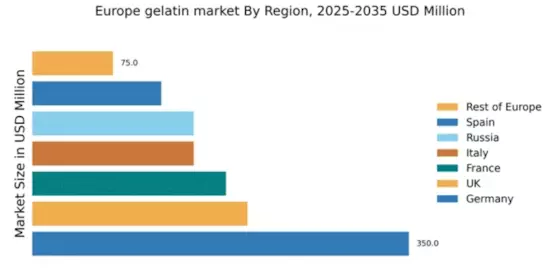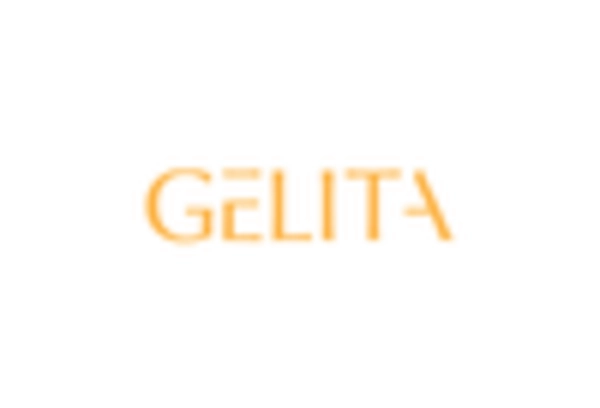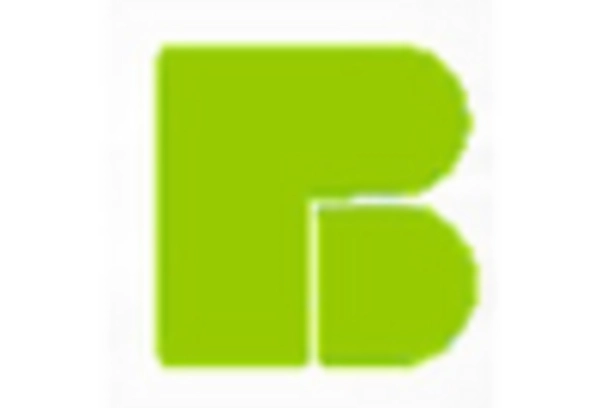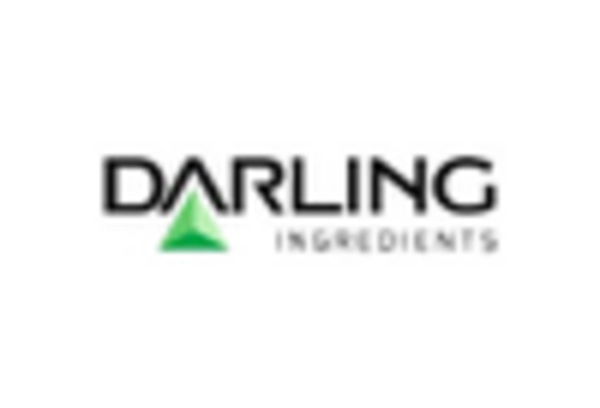Expansion of the Confectionery Sector
The confectionery sector in Europe is witnessing robust growth, which is significantly influencing the gelatin market. Gelatin is a key ingredient in many confectionery products, including gummies, marshmallows, and jellies, due to its gelling properties and ability to enhance texture. The European confectionery market was valued at approximately €30 billion in 2024, with projections indicating continued growth driven by innovative product offerings and premiumization trends. As consumers increasingly indulge in confectionery items, the demand for gelatin-based products is expected to rise, thereby bolstering the gelatin market. This expansion is further supported by the introduction of new flavors and healthier options, which appeal to a broader audience, including health-conscious consumers.
Increasing Demand for Functional Foods
The gelatin market in Europe is experiencing a notable surge in demand for functional foods, which are perceived to offer health benefits beyond basic nutrition. This trend is driven by a growing consumer awareness regarding health and wellness, leading to an increased preference for products that contain gelatin due to its potential benefits for joint health, skin elasticity, and digestive health. According to recent data, the functional food sector is projected to grow at a CAGR of approximately 8% over the next five years, which is likely to positively impact the gelatin market. As consumers increasingly seek out products that align with their health goals, manufacturers are responding by incorporating gelatin into a variety of food and beverage products, thereby expanding the market's reach and appeal.
Growth of the Beauty and Personal Care Sector
The beauty and personal care sector in Europe is experiencing a transformation, with an increasing focus on products that incorporate natural ingredients, including gelatin. This trend is influencing the gelatin market, as consumers seek out beauty products that promote skin health and hydration. The European beauty and personal care market was valued at approximately €80 billion in 2024, with a growing segment dedicated to products featuring gelatin due to its moisturizing and anti-aging properties. As brands innovate and develop new formulations that highlight the benefits of gelatin, the market is likely to see a rise in demand for these products, thereby enhancing the overall gelatin market.
Technological Advancements in Gelatin Production
Technological advancements in the production of gelatin are playing a crucial role in shaping the gelatin market in Europe. Innovations in extraction and processing techniques are leading to higher yields and improved quality of gelatin, which is essential for meeting the diverse needs of various industries. The introduction of more efficient production methods is expected to reduce costs and enhance the sustainability of gelatin sourcing. As the market evolves, manufacturers are likely to invest in these technologies to remain competitive and meet the growing demand for high-quality gelatin products. This focus on innovation is anticipated to drive growth in the gelatin market, as companies strive to offer superior products that cater to consumer preferences.
Rising Popularity of Gelatin in the Pharmaceutical Industry
The pharmaceutical industry in Europe is increasingly recognizing the versatility of gelatin, which is utilized in the production of capsules, tablets, and other dosage forms. This trend is contributing to the growth of the gelatin market, as the demand for gelatin-based pharmaceutical products continues to rise. The European pharmaceutical market is projected to reach €300 billion by 2026, with a significant portion attributed to gelatin-based formulations. Gelatin's biocompatibility and ability to encapsulate active ingredients effectively make it a preferred choice among manufacturers. As the pharmaceutical sector continues to innovate and expand, the reliance on gelatin is likely to increase, further driving the gelatin market in Europe.


















Leave a Comment